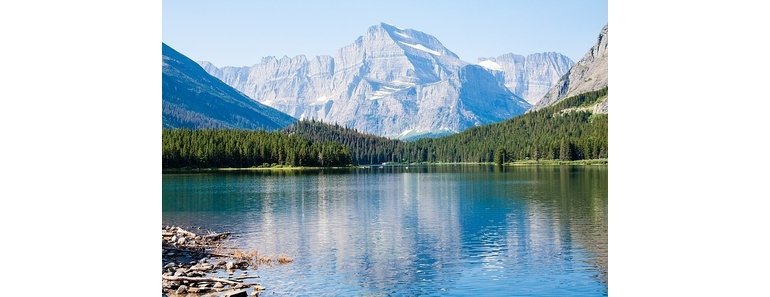Last updated on August 22nd, 2016 at 08:39 pm
Experience the season of fall at its best at Shenandoah National Park.
Shenandoah’s splendor is rivaled only by its vibrant fall colors. There’s nothing quite like a drive through brilliant splashes of reds and yellows.
At Shenandoah, it’s an entirely different world, an escape from the hustle and bustle of the city. Within it lie spectacular vistas, quiet wooded hollows, peaceful heights and stunning cascading waterfalls.
Shenandoah is truly a majestic place.
History
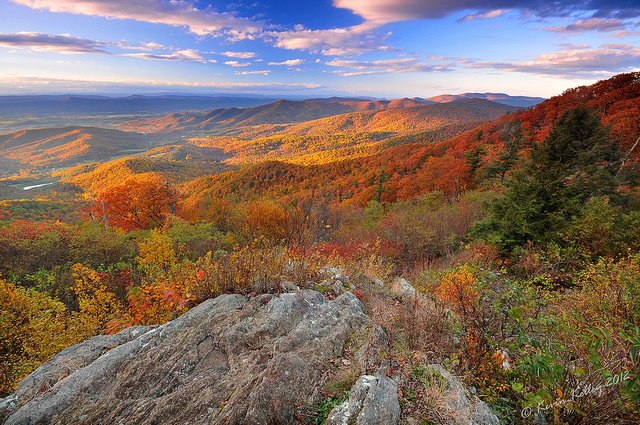
Historically, hundreds of families call this mountain home. And if you look carefully, you can find evidence of these mountain residents.
For nine years during the 1930’s, the Civilian Conservation Court transformed the park, building trails and roads. Shenandoah National Park was established in 1935 using lands donated by the Commonwealth of Virginia. The forest was once devastated by logging and farming, but has recovered, and covers more than 95 percent of the park. Congress designated two‐fifths of the park as wilderness in 1976.
In the 20th Century, as Eastern America became more urban and industrial, the need for natural outdoor retreats increased. Also, on the eve of the Great Depression, Shenandoah offered a natural escape from modern troubles. The land in the surrounding area was then reacquired. The area was protected for future generations. President Franklin D. Roosevelt called the park “a work of conservation” and “re‐creation.”
Interesting Facts
- Shenandoah National Park is located 75 miles from Washington D.C.
- The park attracts more than a million visitors each year.
- It is a 200,000 acre of protected land that is home to tens of thousands of living things.
- The park was carved from private land.
- Located in the Appalachian Mountains, the park is dominated by hardwood forests and supports a wide variety of plant life.
WHAT TO DO
Scenic Skyline Drive
The 100‐mile long Skyline Drive is the backbone of Shenandoah, hugging the mountain ridge line, and offering panoramic views of the land’s beauty. More than 500 miles of trails lead beyond the Skyline Drive to secluded places where you can discover the beauty and peace of this recycled land. Skyline Drive runs directly through the park and boasts of more than 75 scenic views.
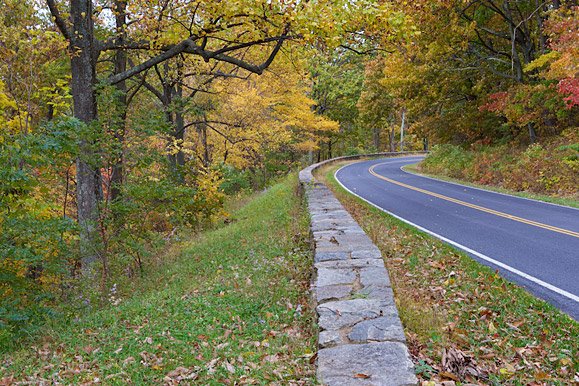
Wildlife Viewing
Within the park is a lush environment populated with more than 1,000 kinds of plants, 100 types of trees, and 330 species of animals – bears, bobcats, groundhogs, vultures, raccoons, and white‐tailed deer inhabit the area.

Hiking
Trails scattered around the park offer a vast ground to cover for hikers. Most popular of which is the Dark Hollow Trail with excellent views of waterfalls along the paths.
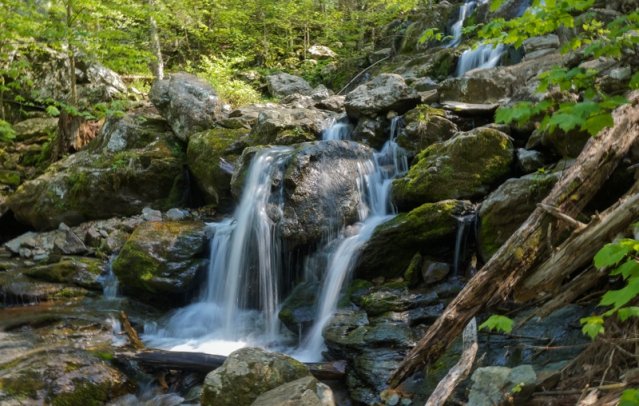
Fishing
A valid Virginia fishing license is required if you plan to fish in the park. It is best to know fishing regulations such as fish size limits and daily possession limits before trying this activity.
Horseback Riding
Horseback and pony rides are available at Shenandoah National Park. The park has more than 150 miles of horse trails and guided trail rides are available from April through early November.
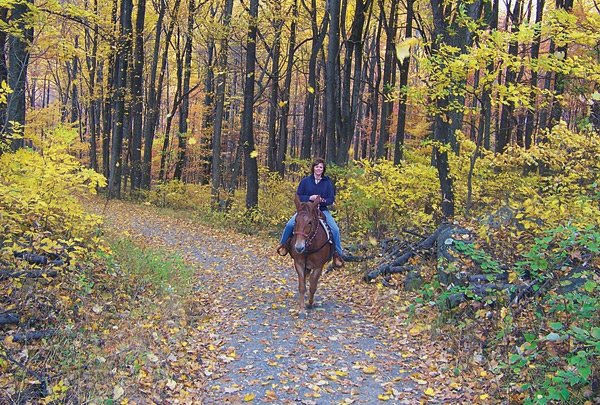
Reservations are required for horseback riding. Riders must be at least 4’10” and should not be wearing open toed shoes or high heels. Rate is $50 for 1 hr ride.
For pony rides, reservations are not required. This activity is available for smaller children age 5 and below. Children must wear a headgear or helmet. Rate is $6 per child.
Camping
The park also offers camping in one of its popular sites, Big Meadows Camp Ground, which overlooks a beautiful lake. You might be lucky enough to experience close encounters with animals that live here like deer that graze in the lush woody vegetation of Shenandoah.
List of the things to be considered when preparing for a camping trip
Campgrounds
Shenandoah National Park has four main campgrounds: Matthews Arm, Big Meadows, Lewis Mountain and Loft Mountain. These campgrounds are operated by the National Park Service and are open in spring, summer and fall. Open year-round, campgrounds in the park offers spacious tent, trailer and RV sites. Reservations are recommended and some are available on a first come, first served basis. Entrance fee is $20 per vehicle and is valid for seven days. Free permit (available at entrance gates, visitor centers, or by mail from park headquarters) is required for backcountry camping. Click on here ( https://www.nps.gov/shen/planyourvisit/campgrounds.htm) for more information on reservations, season, current opening and closing dates, camp regulations and campground map.
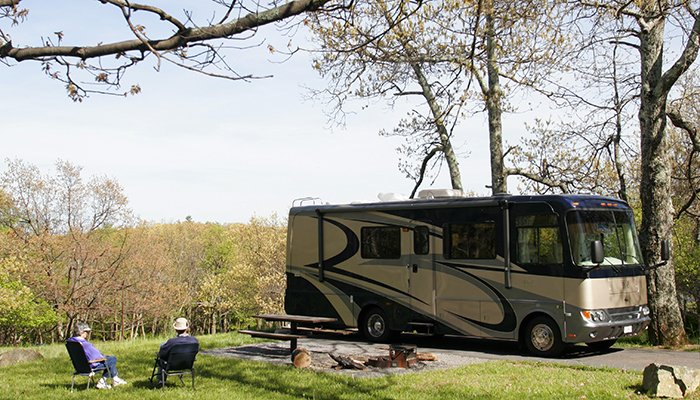
Best Time to Visit
Shenandoah National Park is open to the public all year, but the park’s high season is from mid- to late October – when the changing of colors of the trees takes place. Without a doubt, the fall is the best time to visit this park. When the fall foliage is at its peak, so do the park visitors and tourists, so expect heavy traffic. However, the impressive scenery is well worth the visit amidst the crowd. Plan your trip well and go there early. Wildflowers bloom during summer making it also an enjoyable time to visit.In winter, some areas in the park may be closed due to ice and snow.
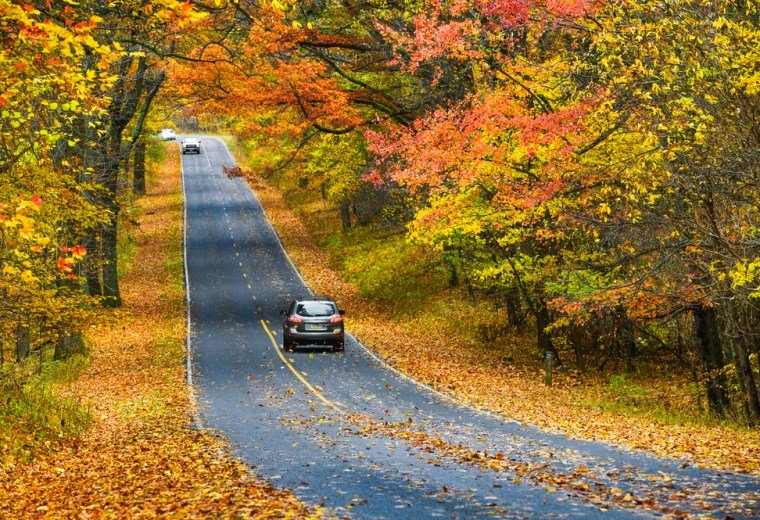
Pets
Shenandoah National Park is one of the few national parks that allow pets on trails and campgrounds as long as they are leashed. Pet-friendly lodging is also available. Owners must observe park regulations for pets.

Black Bears and Safety
It is important to note that Shenandoah has the largest concentration of black bears in the United States. Often news report about “unusual bear activity” and result into closures of backcountry camping and hiking trails in southern sections of Shenandoah National Park. It is best to be aware and learn how to be safe in a bear country.
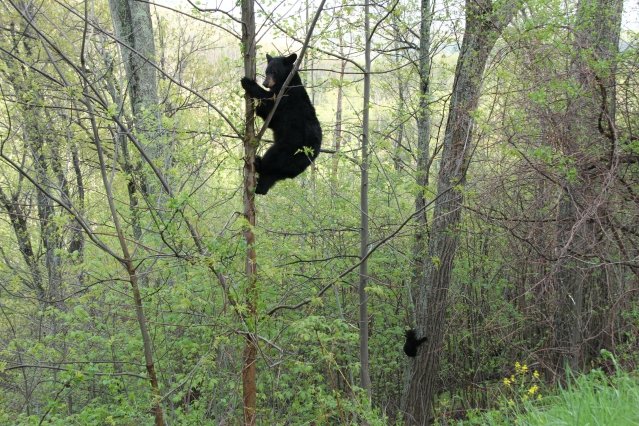
Here are some tips, if you encounter a bear while camping:
- Do not store food, garbage, or toiletries in your tent!
- Keep your camp clean.
- Store your food safely. Use bear-proof containers. Metal ammunition cans ($10-20) and Bear Canisters (approximately $50-60) are easily packed and transported.
- Keep your tent and sleeping bag free of all food smells.
- Store the clothes you wore while cooking or eating with your food.
- Burn all grease off grills and camp stoves.
- Wipe table and clean eating area thoroughly.
- Store food and coolers suspended from a tree at least 10 feet off the ground and four feet out from the tree trunk.
- Dispose of garbage properly. Secure it with your food and then pack it out.
- Do not burn or bury the garbage.
- Sleep away from food areas. Move some distance away from your cooking area or food-storage site.
- Store toiletries with your food; the smell of toiletries may attract bears. Scents and use of perfume or cologne is sometimes an attractant to bears.
Tips for planning camping trips
- For campground reservations, reserve online at www.Recreation.gov or call 877-444-6777
- Opening and closing dates for each campground vary from year to year and are subject to change at any time.
- Campgrounds starts to open in spring, usually late March with Big Meadows opening first followed by Lewis Mountain in April and Loft, Mathews Arm, and Dundo Group in May.
- Campers are required to leave no trace of their presence.
- Pack camping essentials such as sleeping bag, tent, first aid kit and other necessary supplies and equipment.
- Pack appropriate clothing. Layering is the key to easily adapt to weather changes.
- Be prepared for chilly nighttime weather when camping or hiking.
There’s always so much to see and do here, and you could find something entirely new when you visit.
Resources:
http://www.dgif.virginia.gov
http://www.richmond.com/
http://www.frommers.com/
https://www.nps.gov/
https://www.bythesideoftheroad
http://greatist.com/
http://www.goshenandoah.com/
http://dc.about.com/


